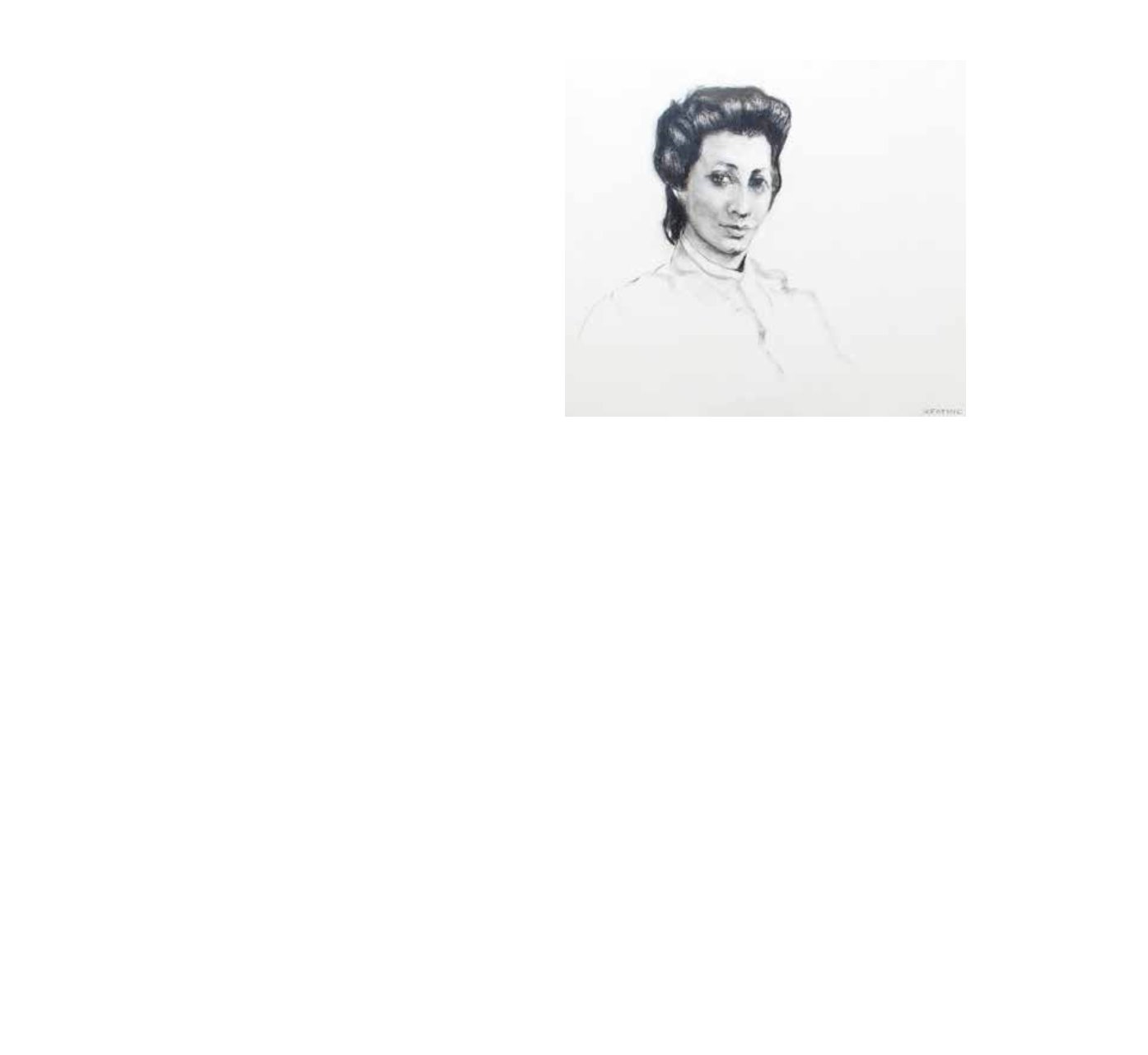
20
14
Seán Keating PRHA HRA HRSA (1889-1977)
Portrait of a Young Woman
Charcoal, 50 x 57cm (19¾ x 22½”)
Signed
€800 - 1200
15
Seán Keating PRHA HRA HRSA (1889-1977)
Study after The Tipperary Hurler c. 1930
Charcoal, 49 x 42cm (19¼ x 16½”)
Signed
Two galleries in New York were of great importance to the market for Irish art during the 1920s: the Helen Hackett Gallery, and The Irish Art
Rooms, later the Museum of Irish Art, run by a jovial Irish-American, Patric Farrell. Seán Keating first exhibited in a group show with Helen
Hackett in 1929, and then in a one-person exhibition in the same gallery for which he travelled to the city in 1930. He then moved to the Irish Art
Rooms where his work was shown in several group exhibitions during the 1930s. Keating’s The Tipperary Hurler, completed for the Paris Olympiad
in 1928, was sent to New York in 1929 where it was exhibited to great acclaim by both above-mentioned galleries, and later, at the World’s Fair held
in the city in 1939. Featuring a well-known star of the GAA, (now known to have been an amalgamation of two sitters; the famous Tipperary hurler,
John Joe Hayes, and, when he knew that the painting had to be finished on time for the Olympiad, completed using the features of a similar looking
art student, former IRA member, Ben O’Hickey), the painting appealed to the large Irish émigré communities in America.
A label on the reverse of Study after The Tipperary Hurler offers tantalising evidence about the origin of the work.The drawing was framed at David
Bendann’s Fine Art Rooms, a renowned gallery in Baltimore, Maryland, established in 1859 and still in existence today.The label suggests that the
drawing post-dated the painting from which it derived, and may have been commissioned by an American purchaser to whomThe Tipperary Hurler
appealed. The suggestion is not at all implausible. Keating was in New York for a month in December 1930, and although exhibiting with Helen
Hackett, he was doing commissioned drawings in a space provided for him by Patric Farrell in the Irish Art Rooms. If not made during that trip
in 1930 then Study after the Tipperary Hurler may have been commissioned, through Patric Farrell, sometime over the ensuing years. Keating was
extremely precise in his treatment of the subject matter, so much so that the study, with its striking lines, and the powerful gaze of the sitter, has all
the attributes of the painting from which it originates, including the important lettering on the sash, CHC (Commercial Hurling Club), founded by
the GAA in Dublin in 1886, and still in existence today.There is one small difference: the face of the hurler is slightly younger, and a little thinner,
than that portrayed in the painting.
The connection to America through the label on the reverse of Study after The Tipperary Hurler is apposite. The original painting, The Tipperary
Hurler, proved extraordinarily popular among the press, and viewers, in New York, Boston and further afield. Although it might have found a home
in America, the painting was donated to the Municipal Gallery Dublin (now the Dublin City Gallery the Hugh Lane) in 1957 by - Patric Farrell.
©Dr Éimear O’Connor HRHA Research Associate, TRIARC-Irish Art Research Centre, Trinity College Dublin, August 2014
€3,000 - 5,000


